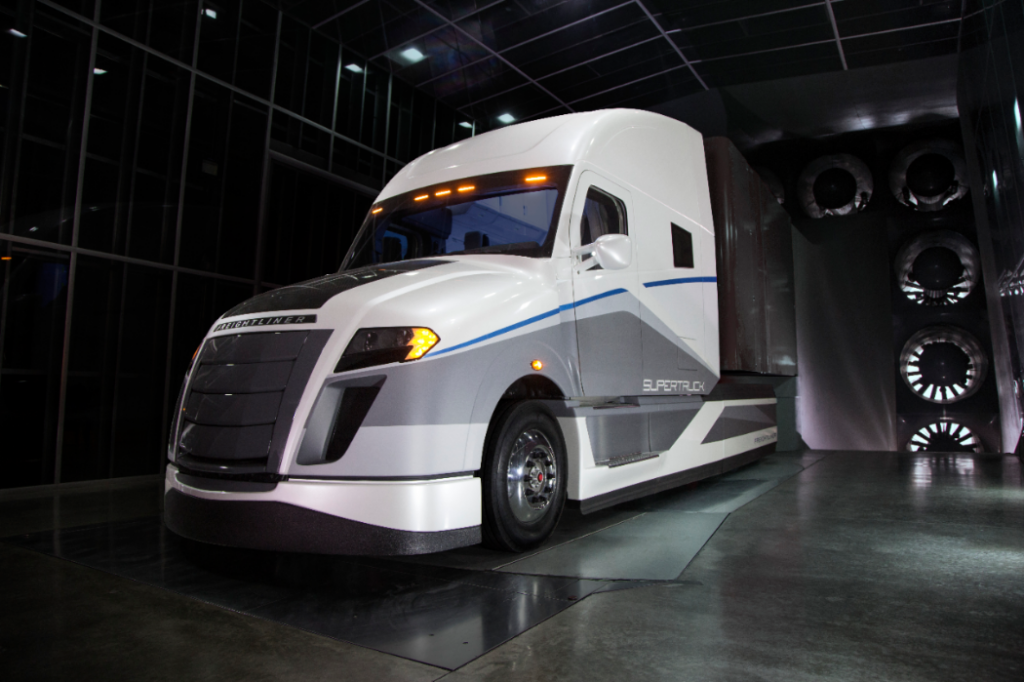SuperTruck 3 projects to focus on zero-emission trucks
Five OEMs will receive a collective US$127 million to push the limits of emissions-slashing trucks under the third installment of the U.S. Department of Energy’s (DOE) SuperTruck program.
“DOE [the U.S. Department of Energy] is working with manufacturers and industry partners to reimagine vehicle transportation across the country to achieve our climate goals — from lowering carbon emissions to increasing efficiency and affordability,” said U.S. Secretary of Energy Jennifer M. Granholm.
The funding is included within $199 million for 25 projects that will involve trucks powered by batteries and fuel cells, and the related charging infrastructure. (All funds in this article are expressed in U.S. dollars.)

The original SuperTruck Initiative launched in 2009 looked to improve the freight efficiency of heavy-duty trucks by 50%. SuperTruck 2 focused on ways to double the fuel-efficiency of over-the-road tractor-trailers.
SuperTruck 3 projects will be funded over five years, with participants matching U.S. federal funding.
Paccar has secured the largest investment at $32.97 million and will develop 18 Class 8 battery-electric and fuel-cell electric vehicles with advanced batteries and a megawatt charging station, the DOE says.
Volvo Group receives $18 million to develop a Class 8 battery-electric tractor-trailer with a range of about 645 km, featuring aerodynamic improvements, electric braking, optimized tires, automation and route planning. It will also develop and demonstrate a megawatt charging station.
“The entire team at Volvo Group North America is honored to be selected once again for the SuperTruck 3 program, especially with the program’s focus on zero-emissions, battery-electric vehicles in the medium- and heavy-duty truck segments,” said Volvo Group North America chairman Martin Weissburg.
Daimler Trucks North America (DTNA) receives $25.79 million to develop a pair of Class 8 fuel cell trucks with a 965-km range, 25,000-hour durability, and a payload that matches diesel-powered equipment.
“Inaction is not an option,” said Rainer Müller-Finkeldei, senior vice-president – engineering and technology at DTNA. ”Through DOE’s SuperTruck 3 program, we will be able to more quickly investigate high-risk, high-reward technologies to clear the technical pathway for their development and potential integration in series production – for the mutual benefit of our environment and our society.”
In lighter duties, Ford will receive $24.95 million to develop and demonstrate five Class 6 Super Duty trucks that run on hydrogen fuel cells, targeting cost, payload, towing and refueling times in line with traditional gasoline-powered models. General Motors receives $26 million to develop and demonstrate four hydrogen-fuel-cell and four battery-electric Class 4-6 trucks. It will also explore clean hydrogen through electrolysis and clean power for fast charging.
The U.S. Department of Energy will also invest $71 million in funding for 20 Low Greenhouse Gas projects to reduce emissions for on- and off-road vehicles and accelerate the expansion of electric vehicle infrastructure and charging.
Have your say
This is a moderated forum. Comments will no longer be published unless they are accompanied by a first and last name and a verifiable email address. (Today's Trucking will not publish or share the email address.) Profane language and content deemed to be libelous, racist, or threatening in nature will not be published under any circumstances.